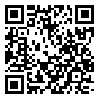Volume 18, Issue 3 (1-2025)
مرتع 2025, 18(3): 372-384 |
Back to browse issues page
Download citation:
BibTeX | RIS | EndNote | Medlars | ProCite | Reference Manager | RefWorks
Send citation to:



BibTeX | RIS | EndNote | Medlars | ProCite | Reference Manager | RefWorks
Send citation to:
Talebi V, KhavaninZadeh A, Mirjalili A. Investigation on Factors Affecting the Production of Ferula assa-foetida L. Gum: A Case Study of Gazestan Habitat, Ardakan City, Yazd Province. مرتع 2025; 18 (3) :372-384
URL: http://rangelandsrm.ir/article-1-1255-en.html
URL: http://rangelandsrm.ir/article-1-1255-en.html
Range Management, Faculty of Agriculture and Natural Resources, Ardakan University, Yazd
Abstract: (1036 Views)
Background and objectives: The degradation of Ferula habitats due to drought and excessive exploitation in Iran poses a significant threat to this plant species, rendering them at risk of extinction. Various studies indicate the utilization of this plant's gum through different methods across the country's habitats, with no specific guidelines developed in accordance with climatic and rangeland conditions. Consequently, this research aims to examine the impact of various cutting methods, plant age, and certain soil characteristics and human factors on gum production and sustainable utilization in the Gazestan habitat of Ardakan city.
Methodology: Conducted in 2019, this study selected three representative areas within the Gazestan habitat of Ardakan city. In each area, three transects of 500 meters were established parallel to each other and perpendicular to the slope direction at regular intervals. Along each transect, 10 plots measuring 20 x 20 square meters, determined by the minimum area method, were established at regular distances. The number of exploitable plants in three age groups (5-6, 7-8, and 9-10 years) was recorded in each plot, with 15 plants selected per age group. Different cutting methods, including one-way cutting at 90 degrees, two-sided cutting at 90 degrees, and transverse cutting, were performed on each plant. The average gum production per plant was measured. Soil samples were collected from a depth of 30 cm at the end of one transect in each representative area, and certain physicochemical soil properties were analyzed in the laboratory. The data were analyzed using a factorial test in a completely randomized design.
Results: The highest average yield was observed in the 8-9 year age group with transverse cutting, producing 27.8 grams per plant. The lowest yield was recorded with one-sided cutting at 90 degrees. The cutting type had a more significant effect on gum production than plant age. Pearson correlation results indicated a negative correlation between gum production and sand, clay, and sodium content, while a positive and significant correlation was found with phosphorus, nitrogen, and silt content (P≤0.05) and organic matter (P≤0.01). Intensive livestock grazing and overgrazing in the habitat weakened the plants, resulting in decreased gum production.
Conclusion: The cutting method significantly influences gum production and sustainable utilization of Ferula assa-foetida. Proper cutting methods prevent plant weakening and enhance gum production. Therefore, transverse cutting is recommended under the study area's habitat conditions. It is crucial to manage and monitor soil organic matter, phosphorus, and nitrogen levels and regulate livestock numbers to increase gum production and ensure sustainable utilization.
Methodology: Conducted in 2019, this study selected three representative areas within the Gazestan habitat of Ardakan city. In each area, three transects of 500 meters were established parallel to each other and perpendicular to the slope direction at regular intervals. Along each transect, 10 plots measuring 20 x 20 square meters, determined by the minimum area method, were established at regular distances. The number of exploitable plants in three age groups (5-6, 7-8, and 9-10 years) was recorded in each plot, with 15 plants selected per age group. Different cutting methods, including one-way cutting at 90 degrees, two-sided cutting at 90 degrees, and transverse cutting, were performed on each plant. The average gum production per plant was measured. Soil samples were collected from a depth of 30 cm at the end of one transect in each representative area, and certain physicochemical soil properties were analyzed in the laboratory. The data were analyzed using a factorial test in a completely randomized design.
Results: The highest average yield was observed in the 8-9 year age group with transverse cutting, producing 27.8 grams per plant. The lowest yield was recorded with one-sided cutting at 90 degrees. The cutting type had a more significant effect on gum production than plant age. Pearson correlation results indicated a negative correlation between gum production and sand, clay, and sodium content, while a positive and significant correlation was found with phosphorus, nitrogen, and silt content (P≤0.05) and organic matter (P≤0.01). Intensive livestock grazing and overgrazing in the habitat weakened the plants, resulting in decreased gum production.
Conclusion: The cutting method significantly influences gum production and sustainable utilization of Ferula assa-foetida. Proper cutting methods prevent plant weakening and enhance gum production. Therefore, transverse cutting is recommended under the study area's habitat conditions. It is crucial to manage and monitor soil organic matter, phosphorus, and nitrogen levels and regulate livestock numbers to increase gum production and ensure sustainable utilization.
Keywords: Rangeland, Ferula assa-foetida, gum, soil, gum production, incision method, human factors, Ferula habitat, Yazd
Type of Study: Applicable |
Subject:
Special
Received: 2024/04/6 | Accepted: 2024/11/17 | Published: 2025/01/29
Received: 2024/04/6 | Accepted: 2024/11/17 | Published: 2025/01/29
Send email to the article author
| Rights and permissions | |
 |
This work is licensed under a Creative Commons Attribution-NonCommercial 4.0 International License. |





